Photo










vimeo
Happily Haptic Lab
Happily Haptic Lab is an exploratory research project focused on replicating and creating new haptic experiences. Using a standardised set of materials, consisting of 3D printed parts, magnets and hall effect sensors, we developed modular controls with customisable haptics for different types of control interfaces.
Our team explored and experimented with various possible materials such as foam, metallic strips, magnets, and 3D printed parts to create satisfying haptic feedback when the haptic system is being actuated with our fingers.
In total, 8 different buttons were designed for different input formats and with different haptic feedbacks.


Everything starts with a sketch !









2D Animated Visualisations – Created using keynote magic move




DID Y3 | 2021 | Platforms | Haptic Everyday ~ Clement Zheng | 13 Weeks | Group work with Ye Jia Jie & Low Kai Yi
1 note
·
View note
Photo

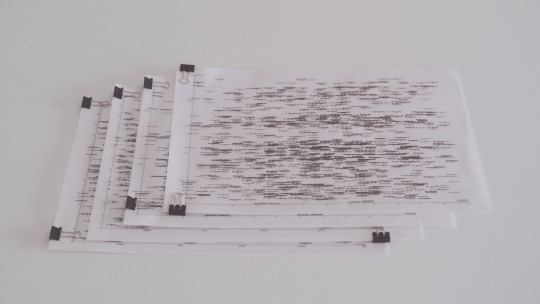
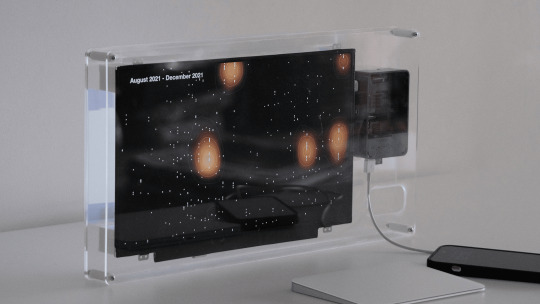


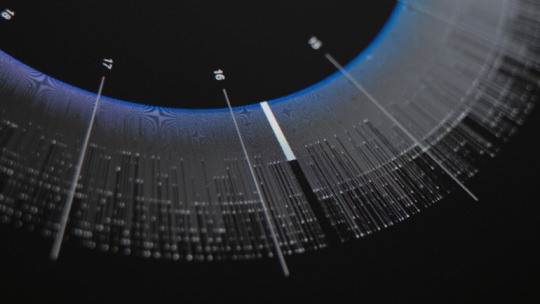
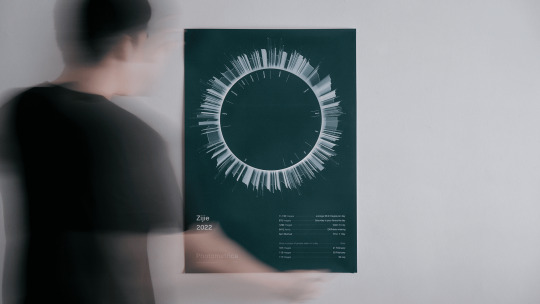
vimeo
Photometrica
Photometrica is a design artefact that seeks to explore metadata as a design material, leveraging timestamp metadata from people's photo archives.
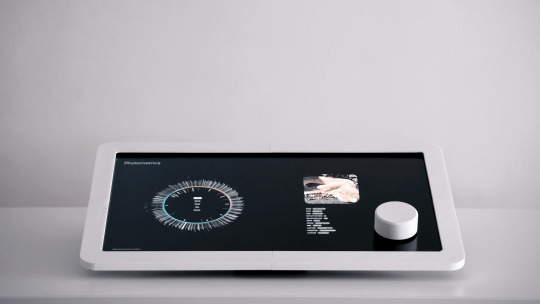
As our digital photo archives grow larger, they become increasingly intangible, lacking the material presence that might entice one to engage with their own archives in an everyday context. This makes it difficult for people to grasp just how big their digital photo archives really are, leading to less engagement.
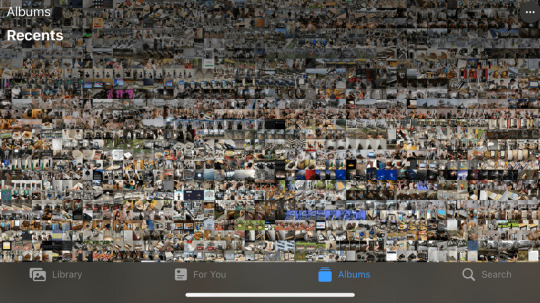
Photometrica started off as an exploration of analog photography and how we interact with digital artefacts today. I wondered if a purposeful slowing down in the way we capture and review our personal media such as digital photos and music could set about a change in the way we treat and value our digital data.This led me to the field of Slow Technology in HCI research, which aims to support reflection on interactions over long periods of time, and the activity of slowness and revisitation.


A byproduct of our interaction with digital photos is standardised timestamp metadata, also known as EXIFdata. My thesis looks at how these archives of rich metadata can be used to design new ways to support the experience of meaning-making, reminiscence, and reflection of captured events.
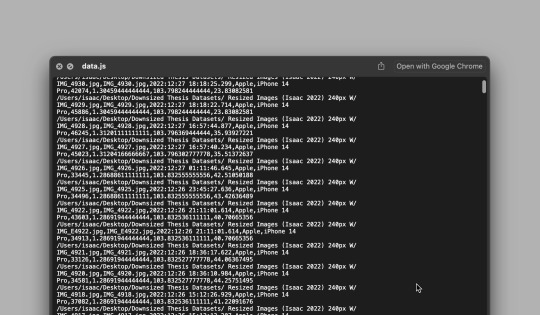

An observational study on how people acted on remembering yielded 63 different memory cues which were then categorised into spectrums, where digital memory cues stood out.
My goal was to design a system that would strongly emphasise supporting reminiscence and reflection of one's experiences rather than the ease of capture or retrieval.
Inspired by other works in this field of research such as life-logging, journaling apps, and DIY habit trackers, an initial collection of design probes were created.
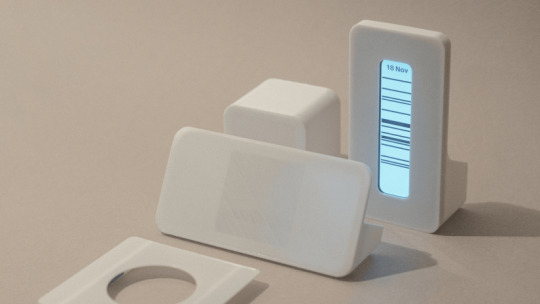


Photometrica uses a custom script to extract precise metadata information from one's photo archive, with each photo mapped as individual data points that participants are able to interact with using a rotary dial to toggle between sort modes.

A2 posters were also produced as take home items in which participants can interact with their photo archives purely through a data-first experience, prompting conversations to reminisce on past events.

DID Y4 | Thesis Project | 26 Weeks | Individual work under the guidance of Clement Zheng
0 notes
Photo








vimeo
VOLT – Electric Vehicle Charging System
Volt is a next-generation autonomous EV charging system designed to bring high-efficiency smart charging to urban cities, using existing car park infrastructure as a foundation for system installation.
Volt utilises a rail-mounted solution to ease the current space-time constraints of EV charging in a multi-story or underground car park, thus levelling out energy usage required ultimately reducing charger installation and grid infrastructure upgrade costs
Volt smartly allocates and informs EV users of available charging spots and optimises EV charging in the carpark in such a way that eases the energy load on the grid during peak charging times
DID Y3 | Platforms | Product Design+ ~ Song Kee Hong | 13 Weeks
0 notes
Photo






vimeo
Super High Maintenance Plant
Super High Maintenance Plant is an interactive virtual pet based on common traits of a typical plant. Using a 3D virtual model of the plant, the user can view live interactions with the virtual pet with the use of a Microbit controller. Action scenarios and sequences are played out when specific trigger actions are activated by the user. Corresponding responses are played out on a HTLM5 canvas in which the 3D virtual model will react to user actions.
Super High Maintenance Plant was created with MicroBit and p5js javascript libraries. This allowed raw input data to be transmitted from the Microbit to an onscreen outcome.
DID Y2 | Computing for Design | 6 Weeks | Pair work with David Ng
0 notes
Photo









vimeo
How to build a wall with light
How to build a wall with light explores the possibilities afforded by using light as a material and perspective to blend both the physical and the virtual. Existing physical structures serve as a platform for an anamorphic projected layer that is used to reveal new volumes and geometry beyond the existing physical surface.
Various locations around Singapore were chosen and trialed in order to find out if they were suitable for projection mapping. 3D software was used to virtually map out areas in order to match up perspective and distance in a virtual space before being projected physically in real life.
DID Y2 | Platforms | How to build a wall ~ Tiffany Loy | 13 Weeks
0 notes
Photo







vimeo
Nest Plant Assistant
Nest Plant Assistant reimagines what it would look like if a company like Nest & Google harnessed the smarts of the Google assistant and combined the bio-sensing capabilities of plants into a smart home product befitting of their future product lineup. The Bad Design platform sought to use existing bad design outcomes as unique starting points for actually useful products or services.
DID Y2 | Platforms | Bad Design ~ Lee Tze Ming | 13 Weeks
0 notes
Photo









Equipment for Dream Streamers
Equipment for Dream Streamers is a speculative design project that looked towards a world in which dreams can be manipulated and controlled. Dream streaming involves an individual altering his/her dream state and processing their dreams for public viewing in real time, similar to how one would stream games on twitch today.
Extensive research and prototyping was conducted for story-telling, form finding and material exploration, where different typologies for various concepts were explored to see how they might form potential product collections for a not too distant future.
DID Y2 2020 | Platforms | Fictitious Forms ~ Olivia Lee | 11 Weeks
0 notes
Photo










vimeo
ALT. Modular Camera System 2018

ALT. is a modular camera system alternative to traditional camera systems on the market that allows photographers ot have a fully customisable and personalised photographic experience. ALT's open hardware ecosystem allows users to select interchangeable frames and modules to build their own, unique camera according to one's needs, wants and preferences.
Modularity in a product allows the product to involve the user and give him / her a greater sense of ownership. It is also a process of individualising and building one's own product that is unique from others, something consumers rarely get a chance to do when buying off the shelf products where consumers are expected to adapt to the product rather than the product adapting to the user's needs and wants.
Making the assembly process of modular components simple but interesting for users. Modularity in a product should not increase the complexity of the product but instead enhance the user experience.
Poly Y3 2018 | Final Year Project | 12 Weeks
0 notes